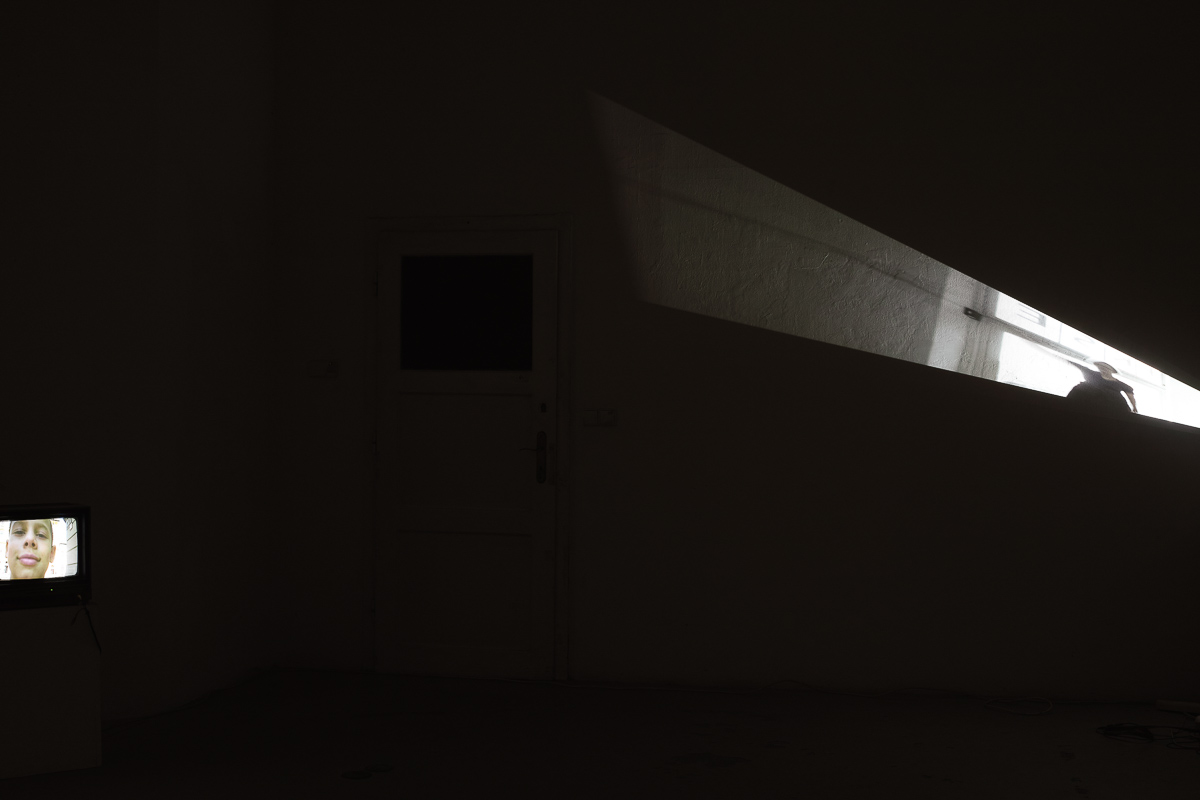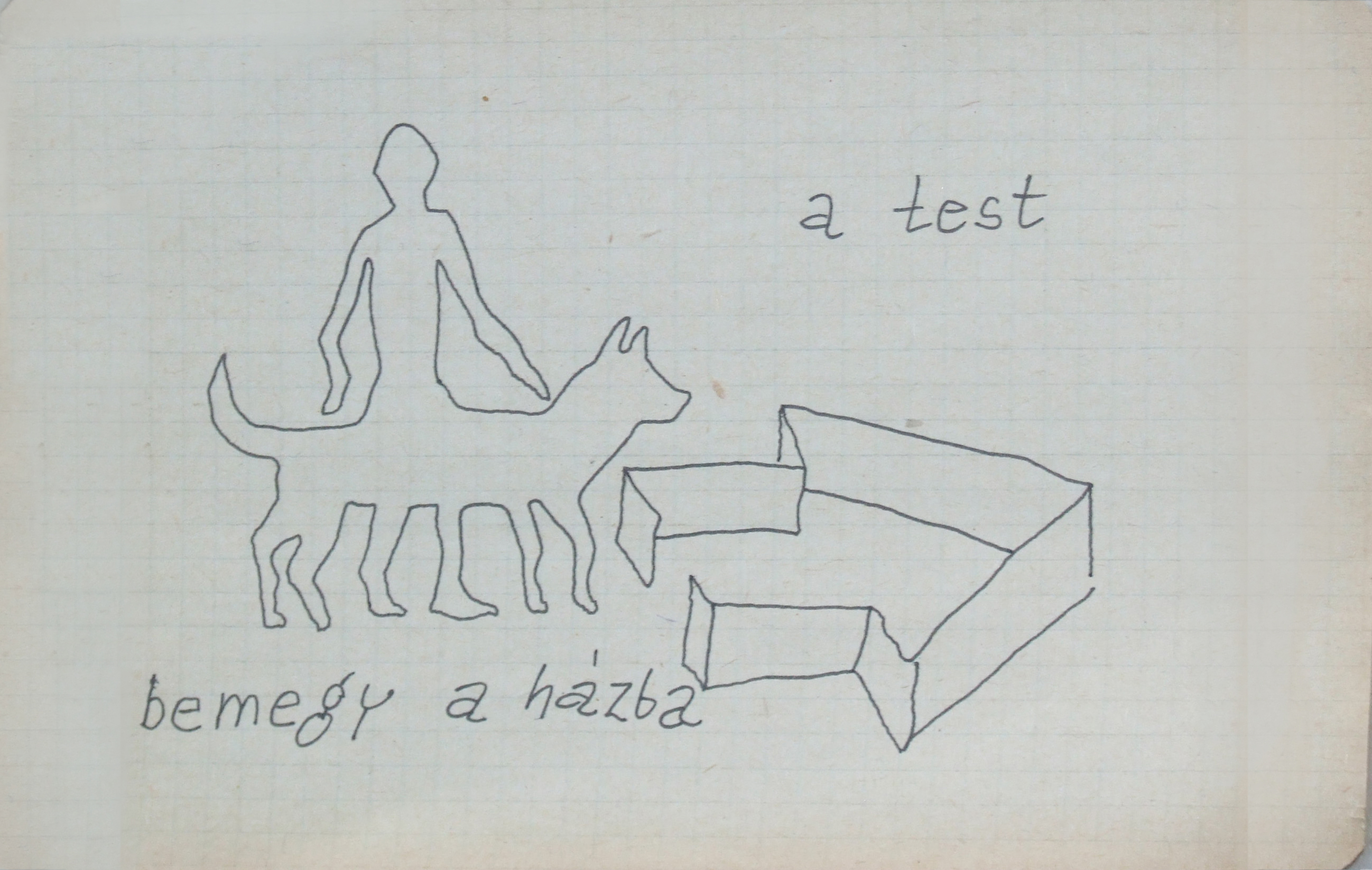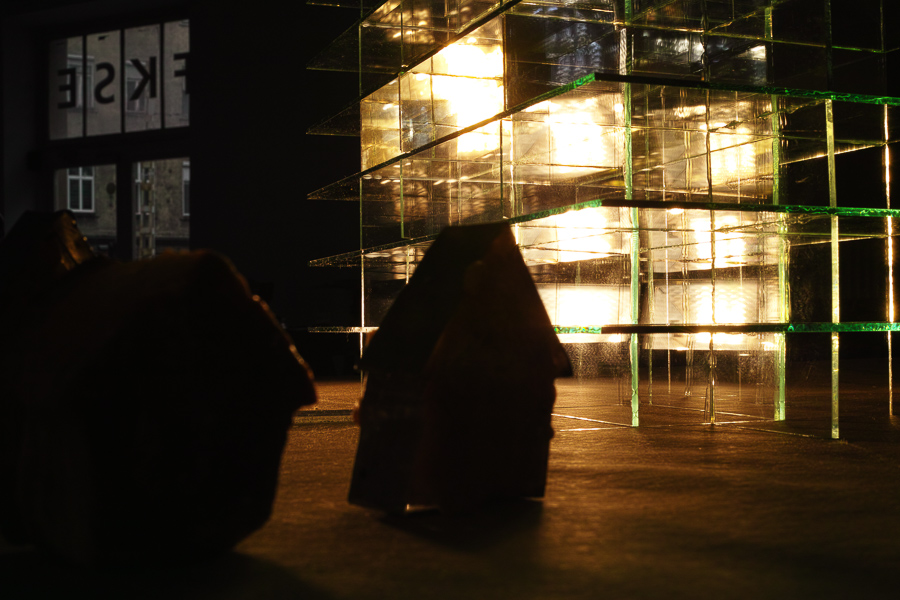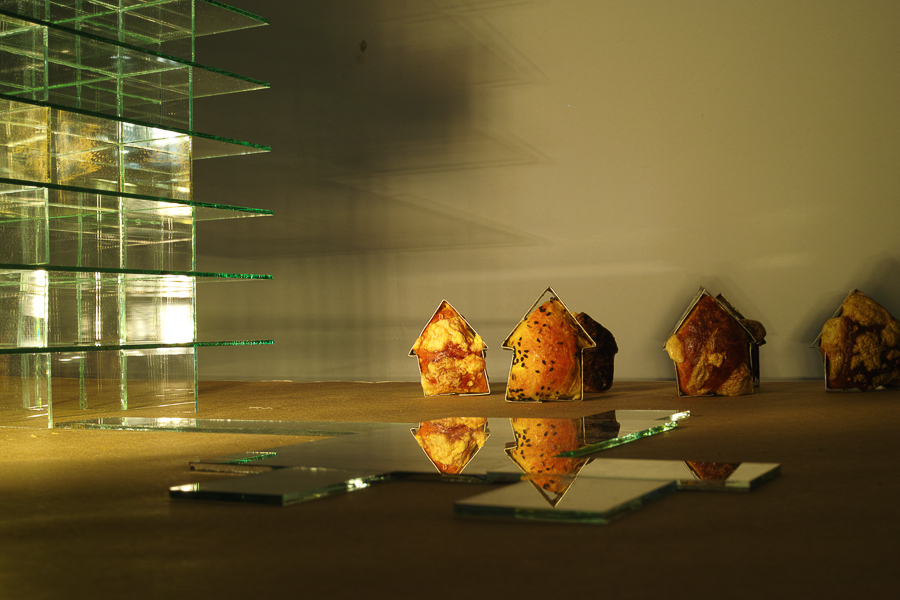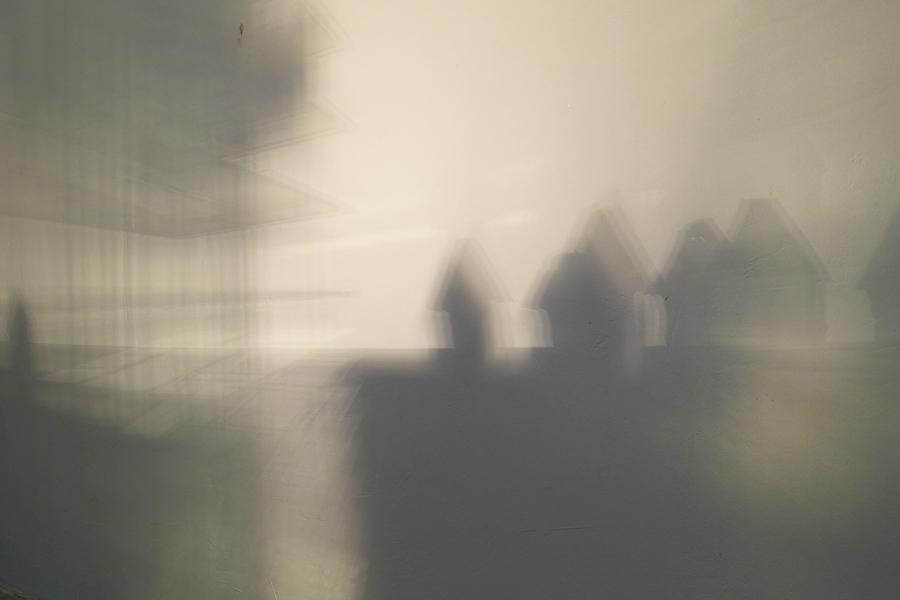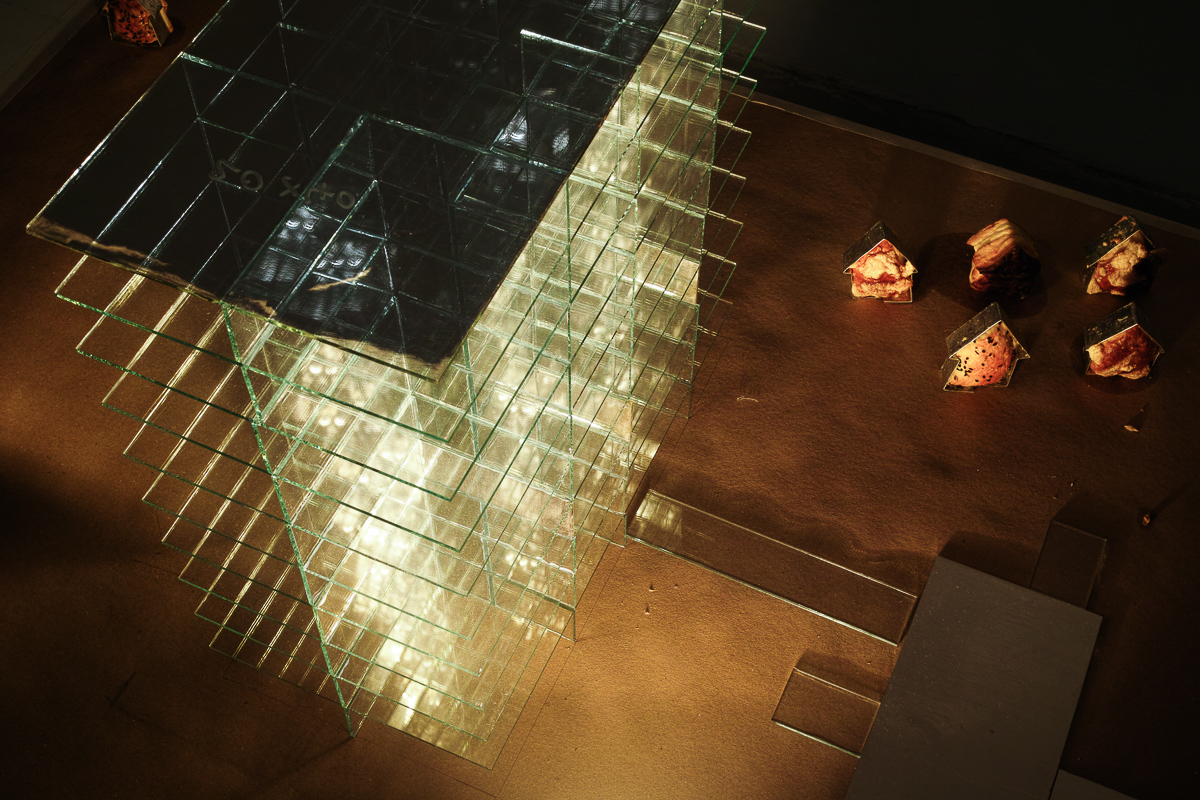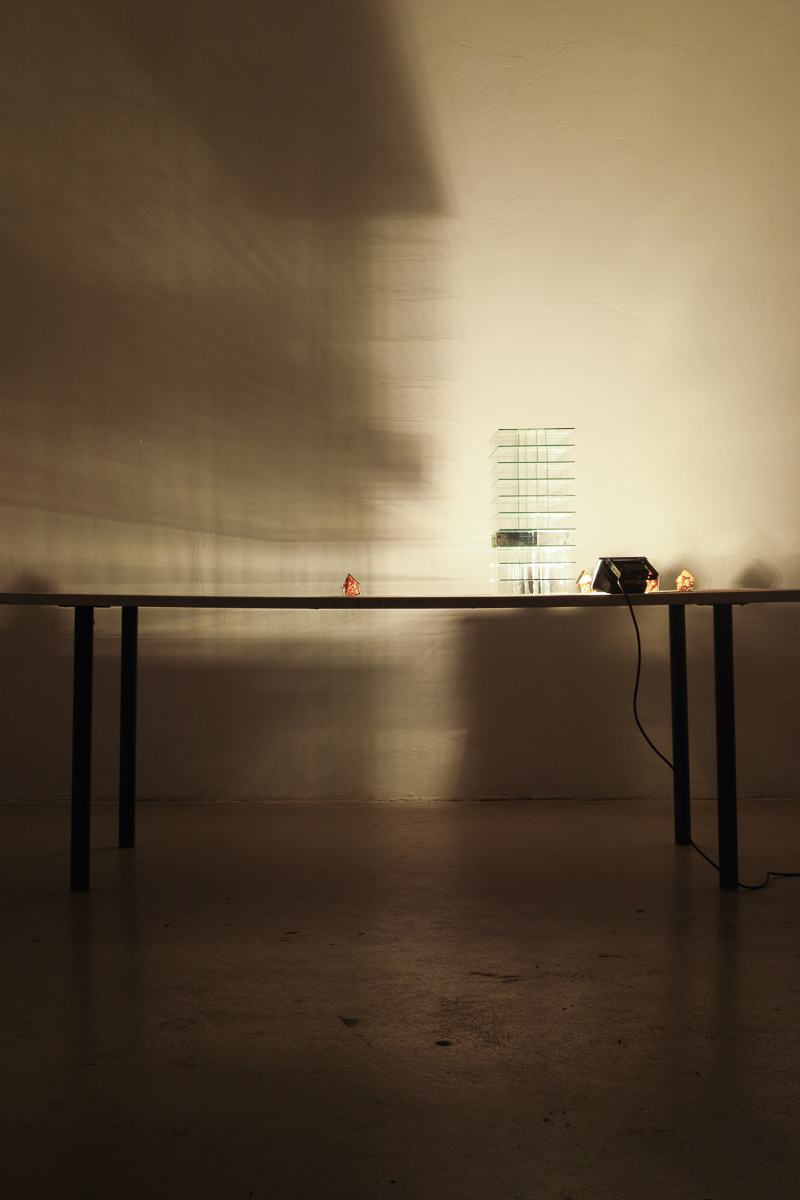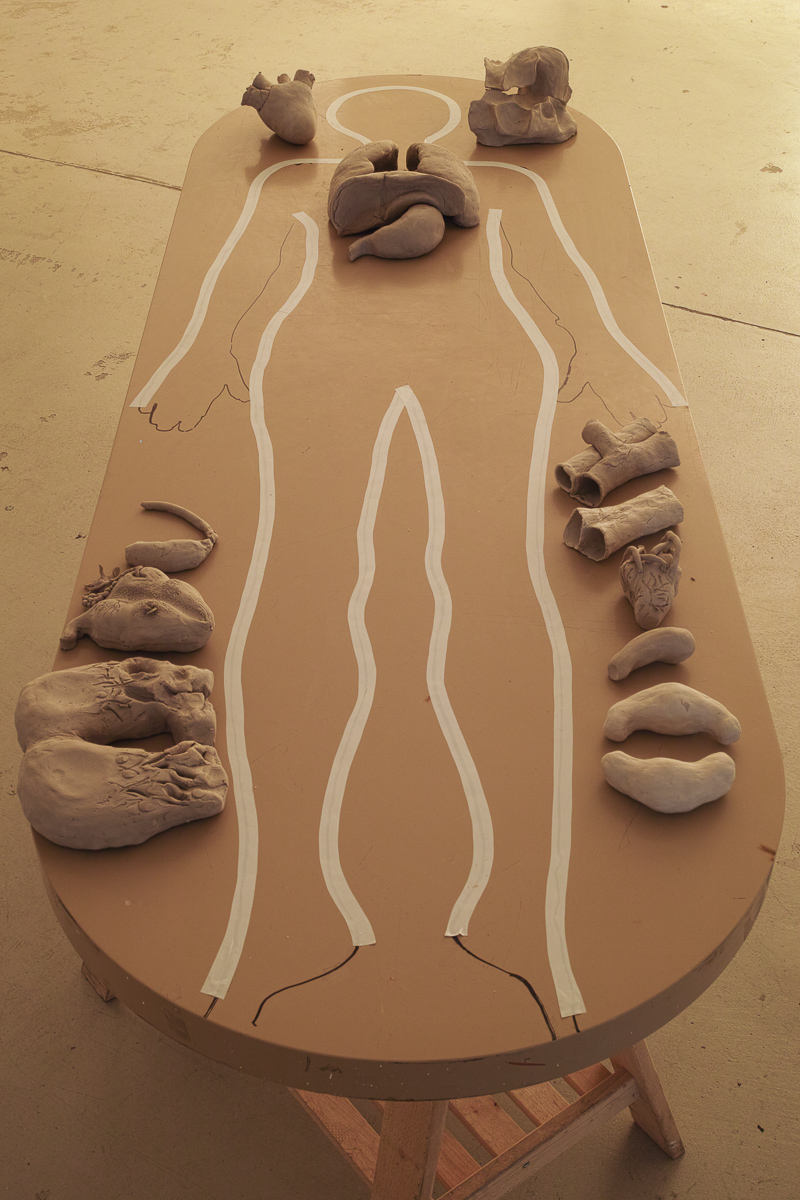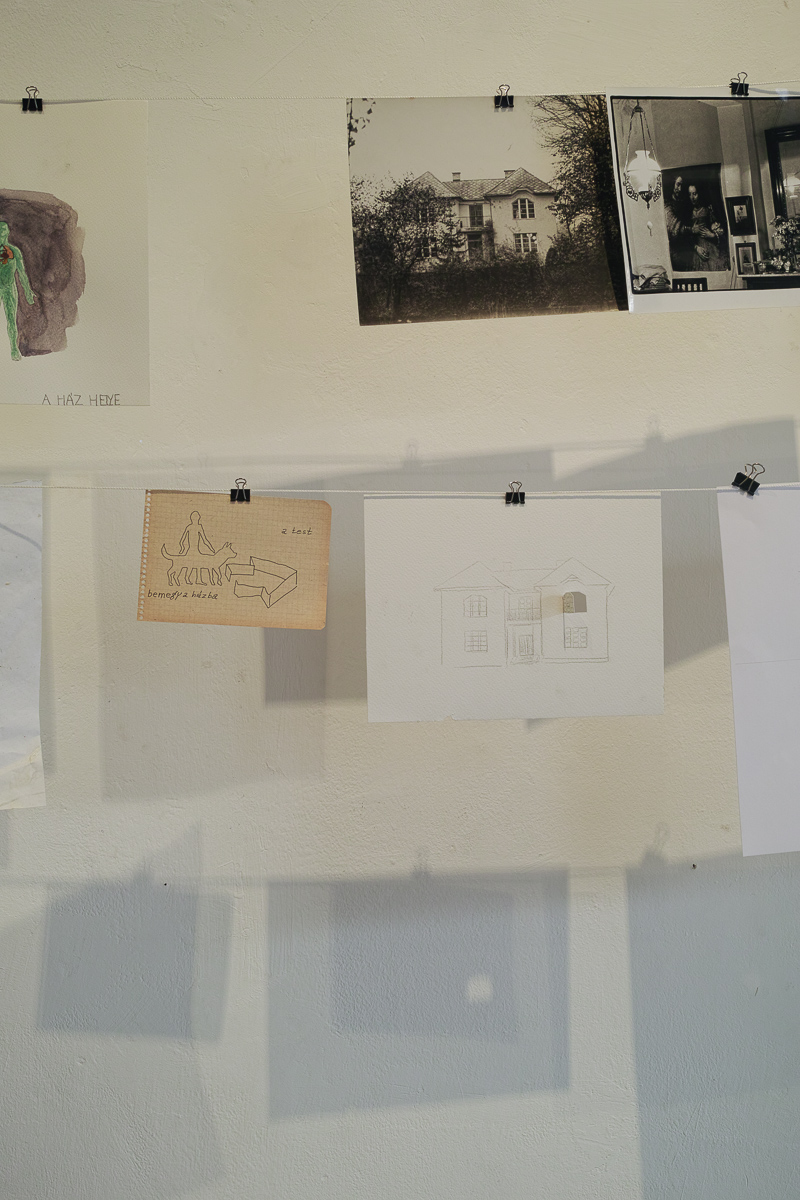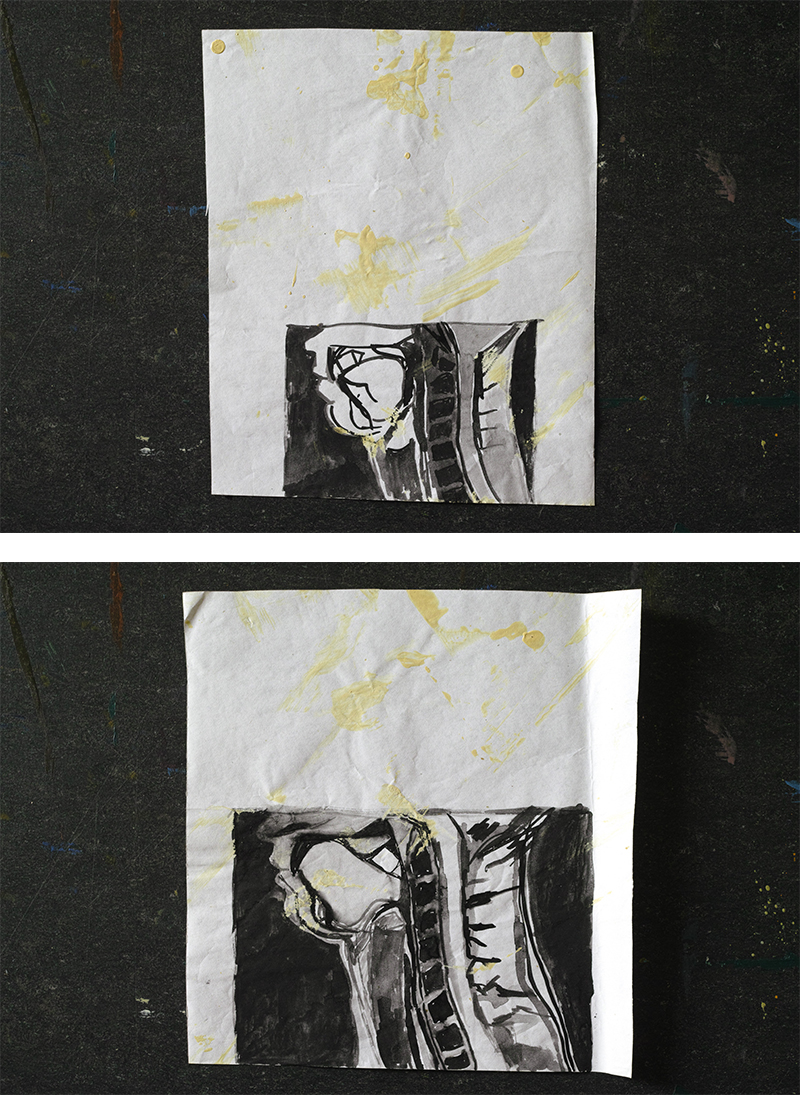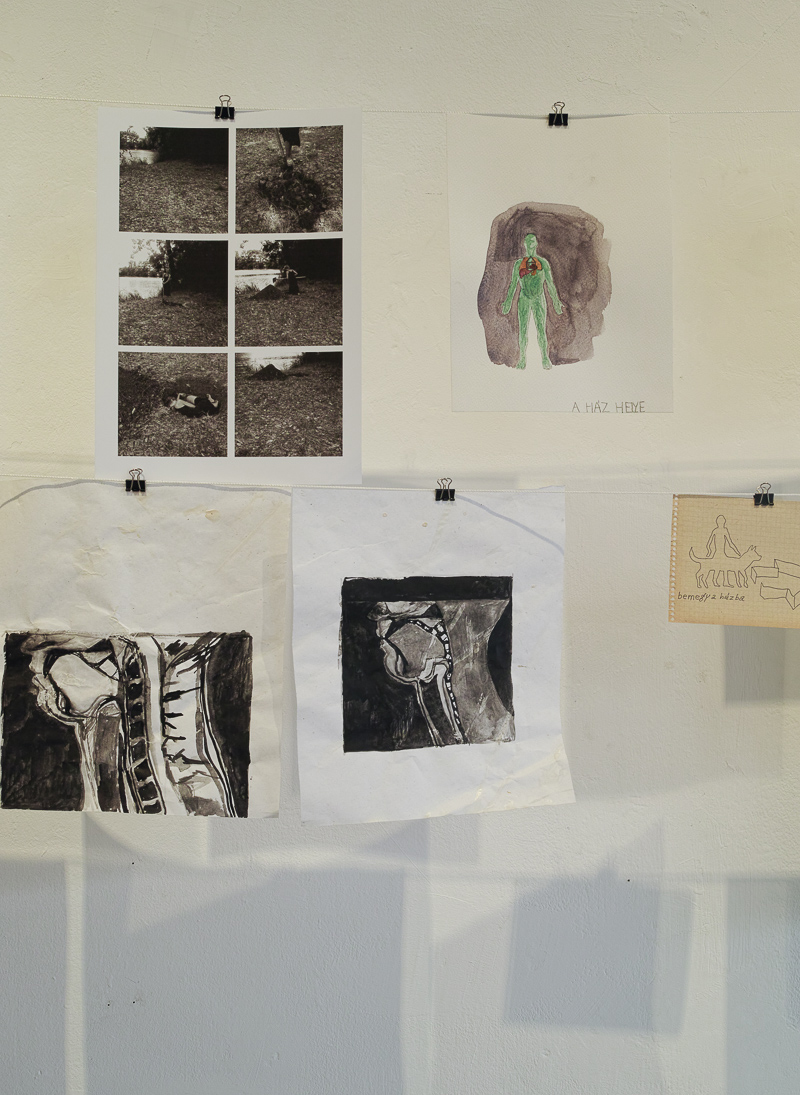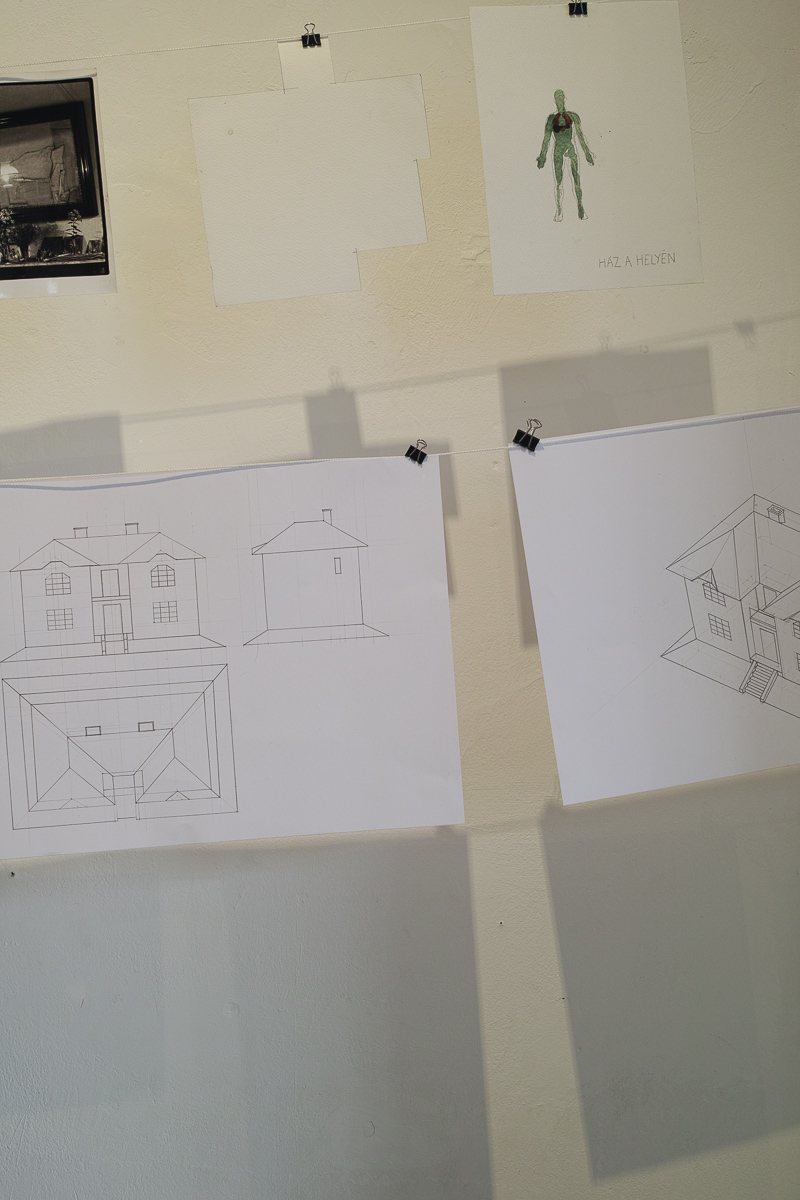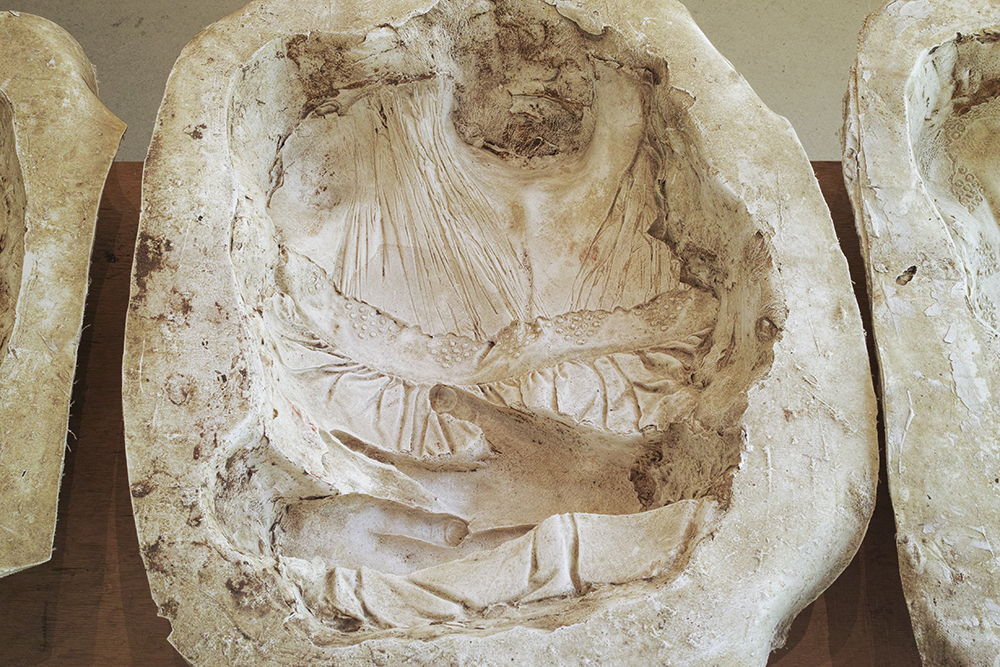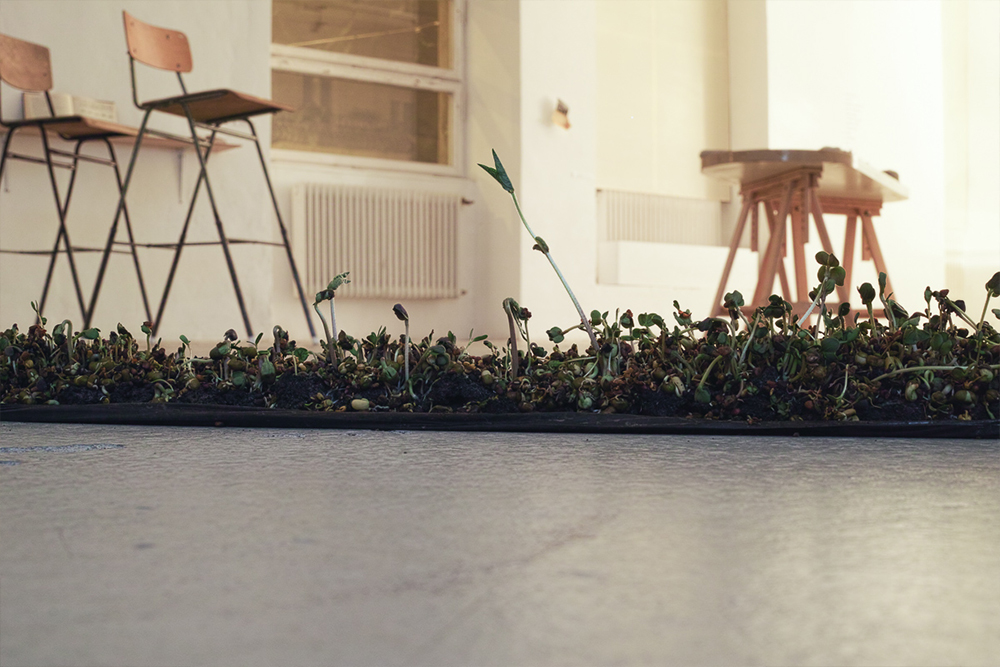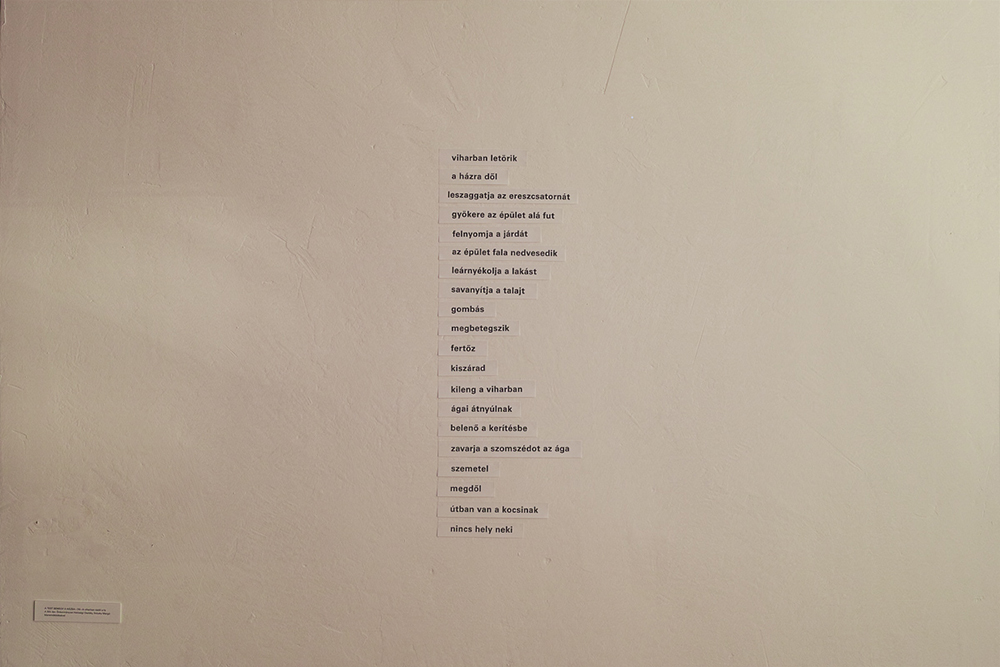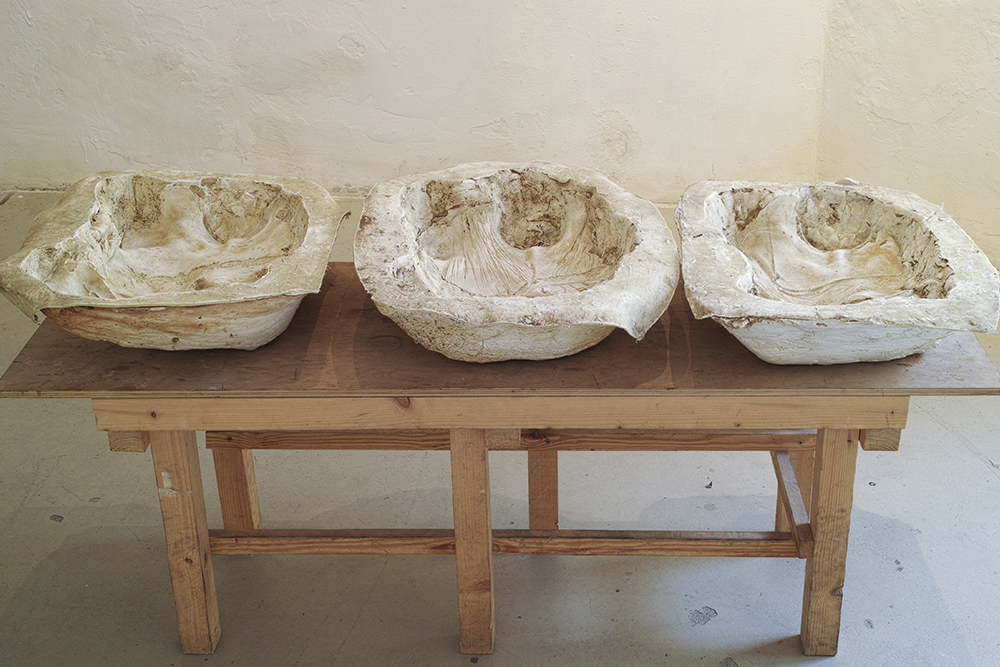“In FKSE’s (Studio of Young Artists) The body enters the house exhibition and event series the artists create a chain of associations which presents themselves from the personal, experienced, everyday practical use of architectural solutions, technologies and structures of buildings that transform the examining urbanist, architectural historic and social processes points of view of the biennale into personal experiences and lived through situations. Similarly to the approach of the Chilean kiosk the exhibition the initial point is experience and it assigns and twists the set structured relations of body and space through the general. Arriving in the exhibition two dominant elements structure the starting points. On the right the video installation which recorded the first, opening day of the exhibit, where the “house” (the ground floor of a former “yellowstar house”) is cleansed by Ildiko Bakos by lashing, before the artists occupy it. The black and white film projected on the wall is made up of intentionally distorted images, the poetic air that derives from the stateliness of the female figure, the repetitiveness of the circular movement and snapping sound of the lash is a strong atmospheric opening element of the exhibit. On the left the loose allocation of some books on a shelf (Tristes Tropiques by Claude Lévi-Strauss, architectural handbook of Reischl Antal, German grammatical structures) the journal of the exhibit, and Ildikó Bakos’s Catalogue (published in 1983, also in connection to the exhibit of the FKSE) forecasts the associative as well as explorative, investigative character. The interplay of such different texts in question of topic and genre moves on the verge of the mixture of rational structure and the everyday empirical knowledge. To put it differently the motive for this exhibit is the exploration of those structures which then determine our relation to body and space as a language and presents itself from our lives, and transitionally, our thinking. Just as language, these structures create relationships which generate meaning such that do not derive naturally from their own value, but which produce meaning as they are being used. Their primary essence is repetitiveness, a patter which on the one hand makes attention numb and also muffles it, on the other hand, due to the repetitive pattern, it sinks into the mind and offers the illusion of meaning.”
EXERPT: TÜNDE MARIAN VARGA: THE HOUSE OF THE BODY
BALKON 2014_7, 8
